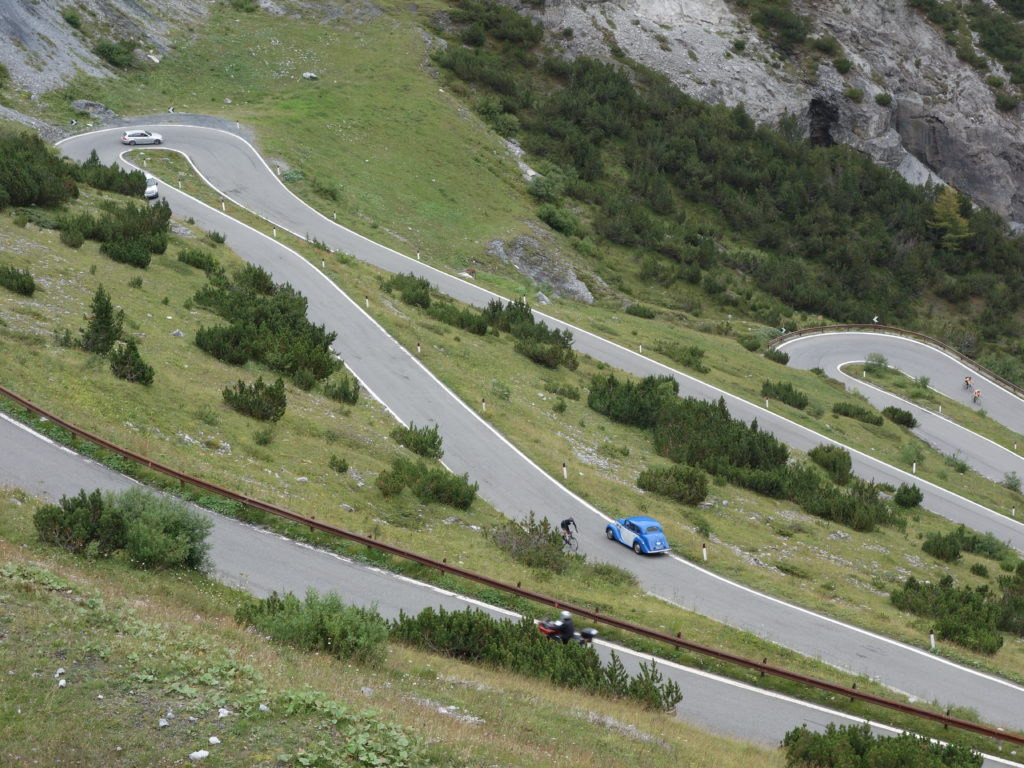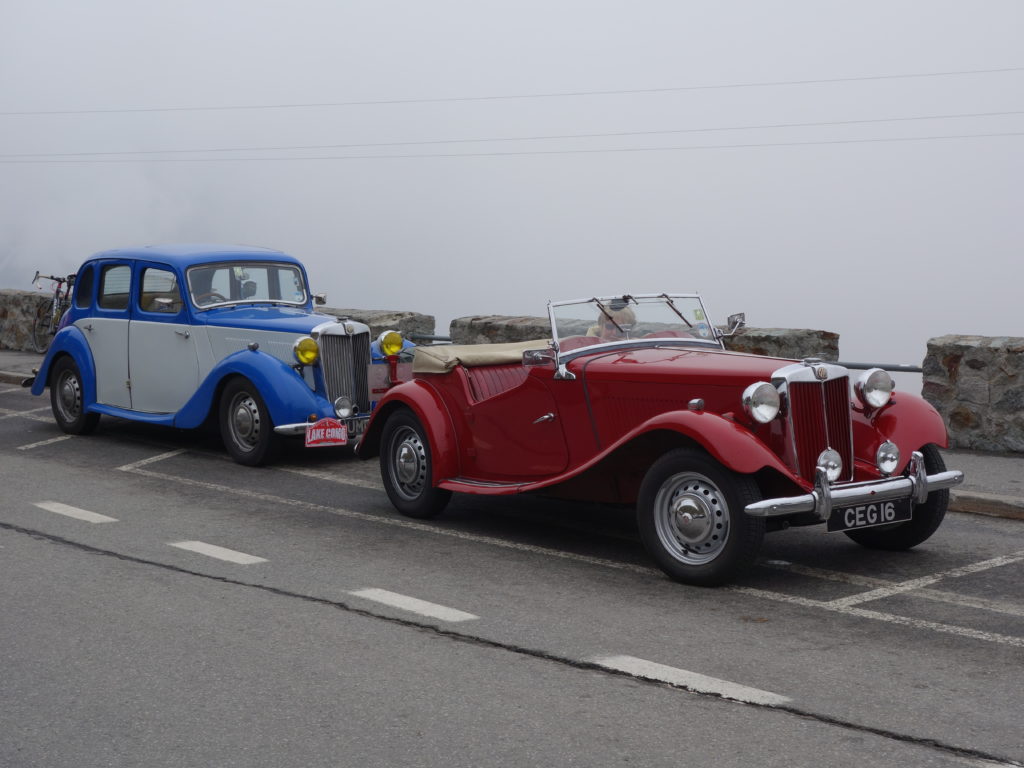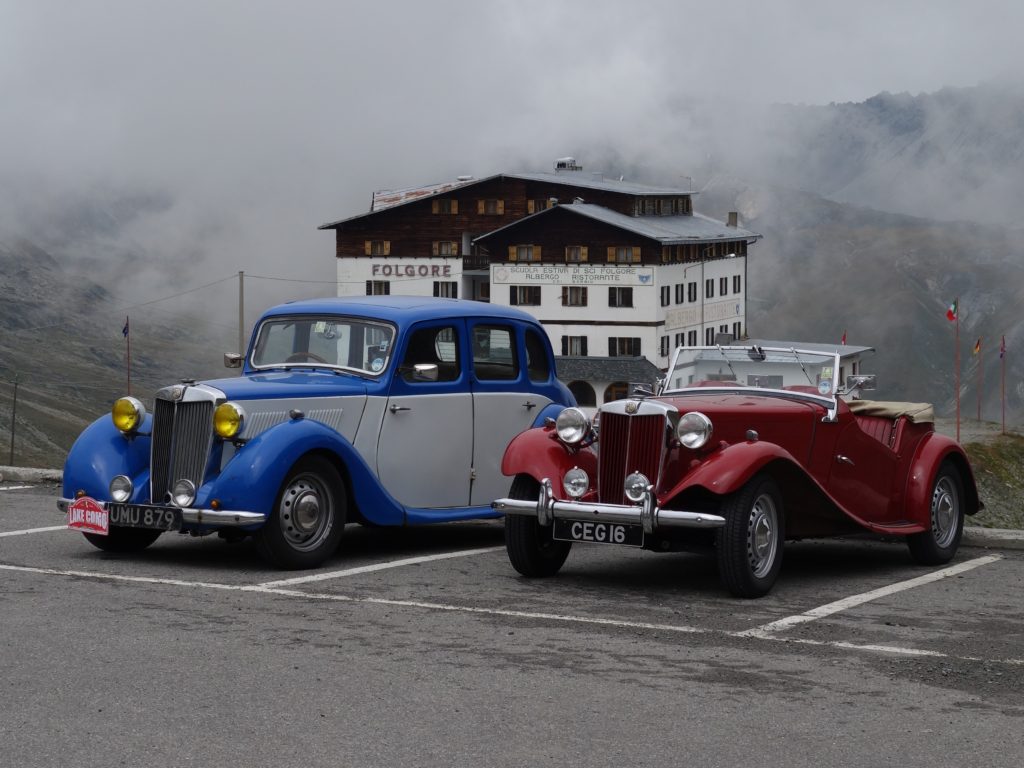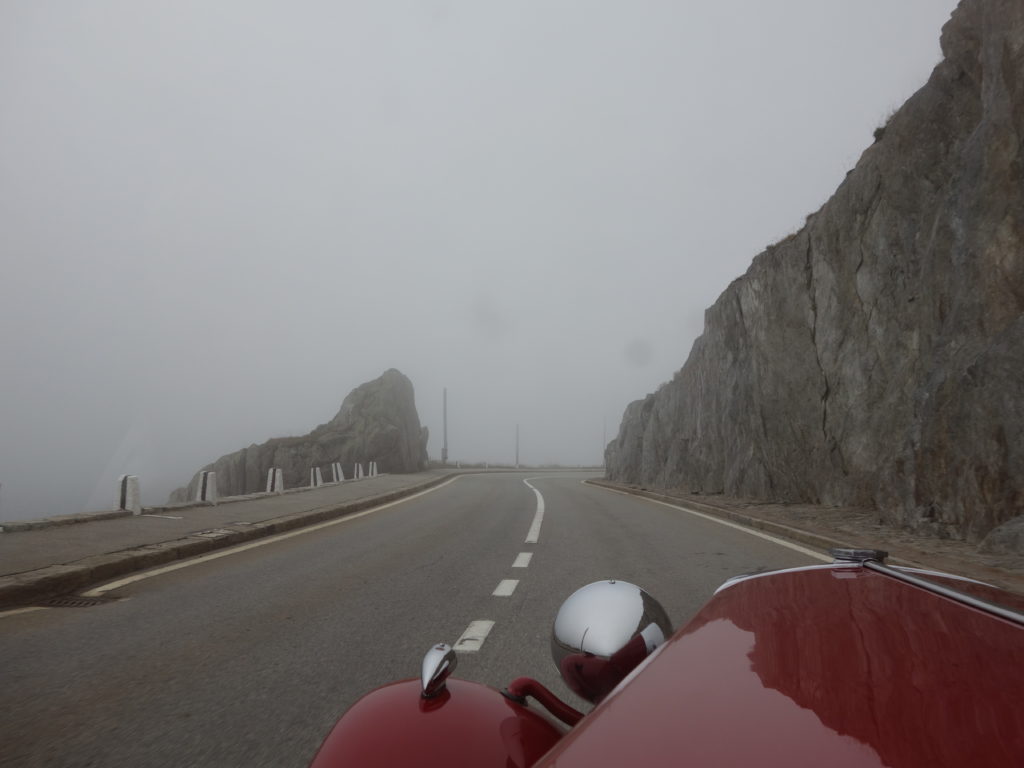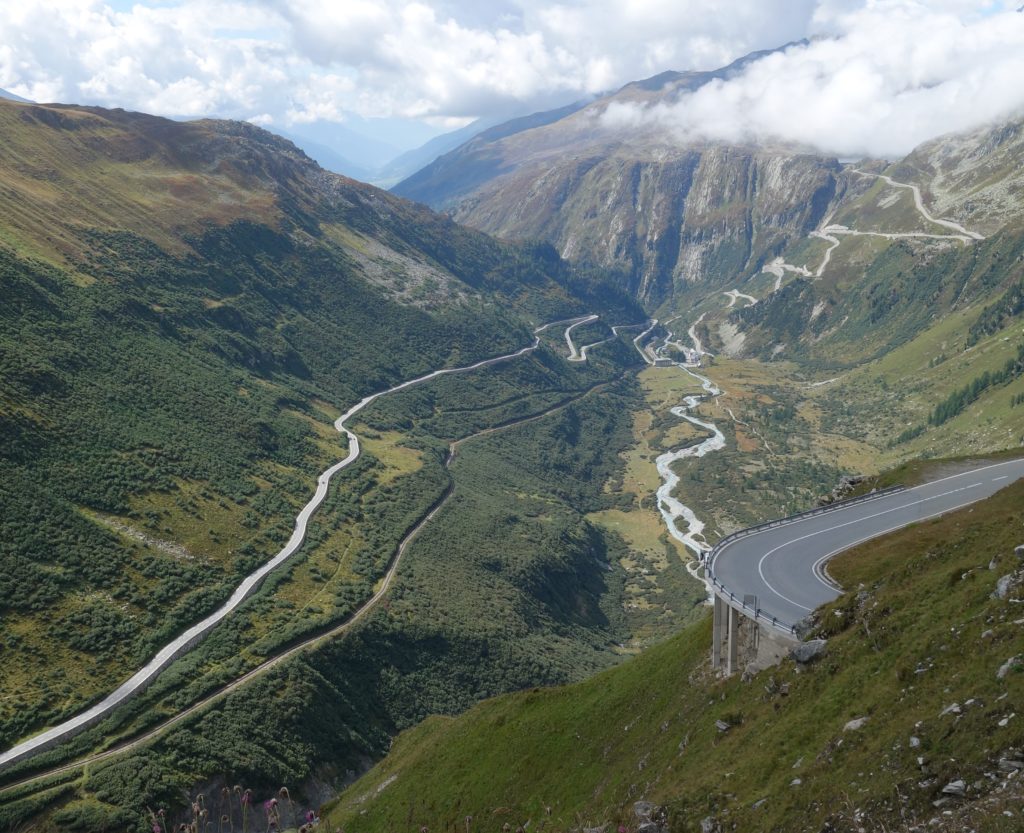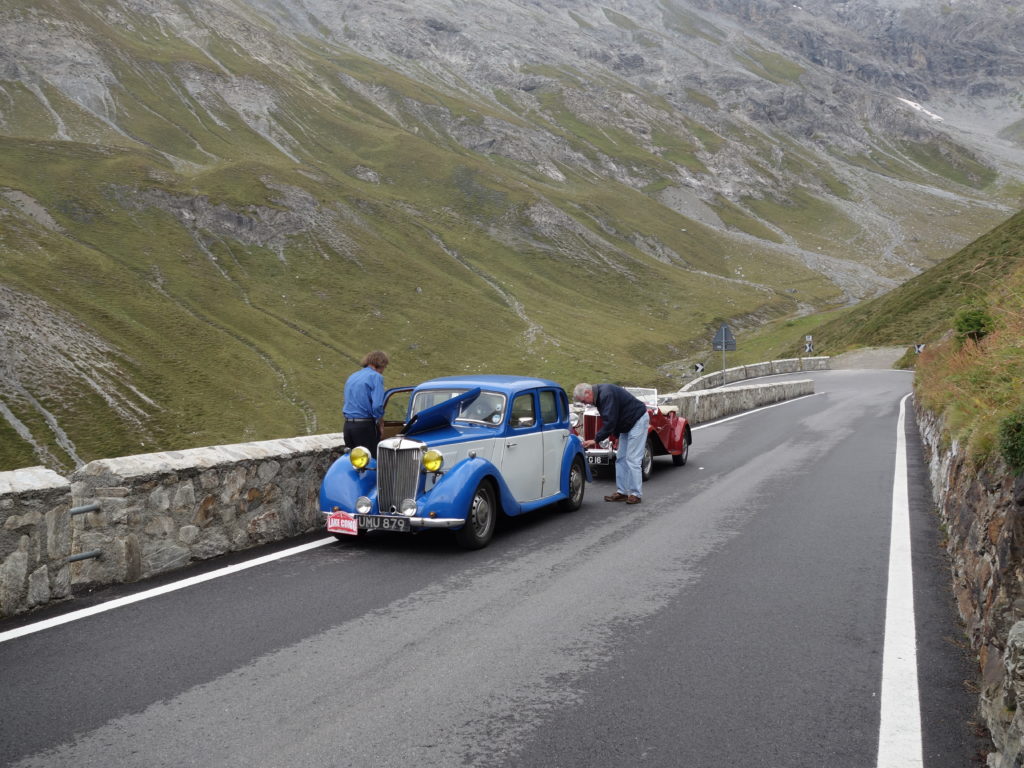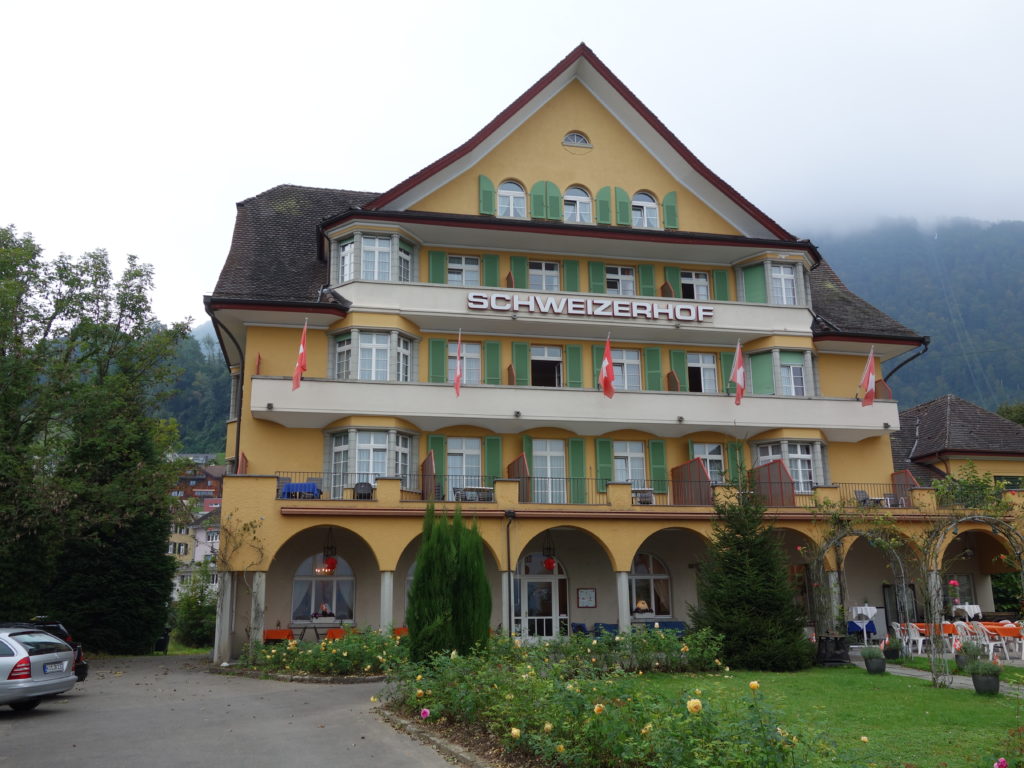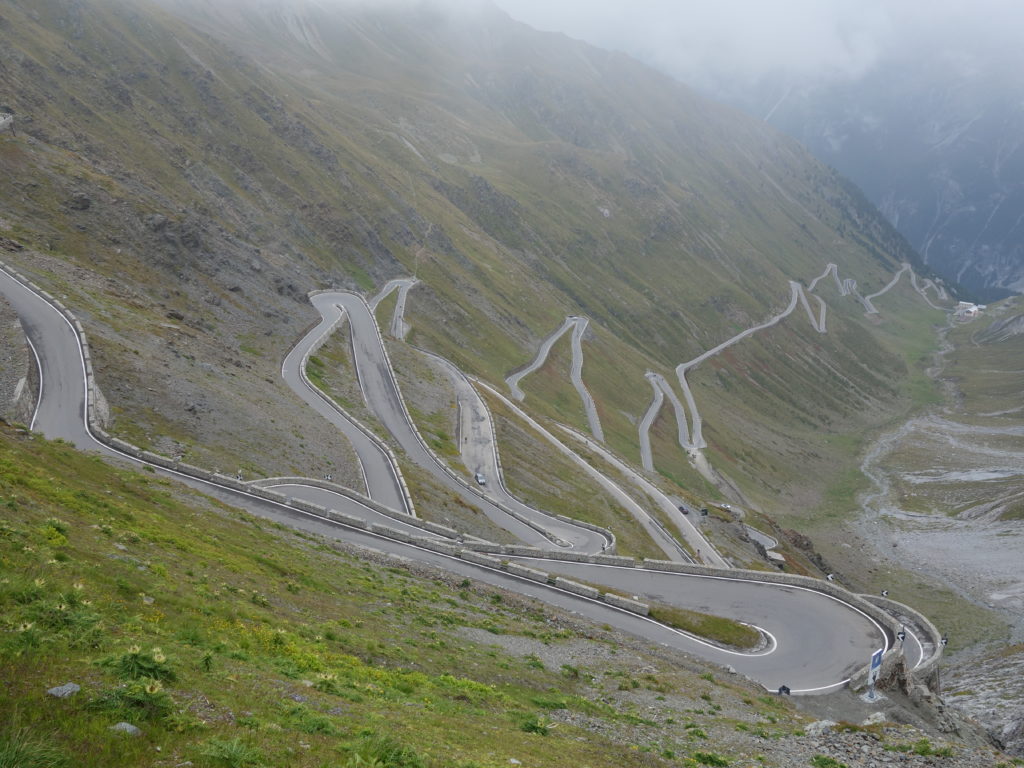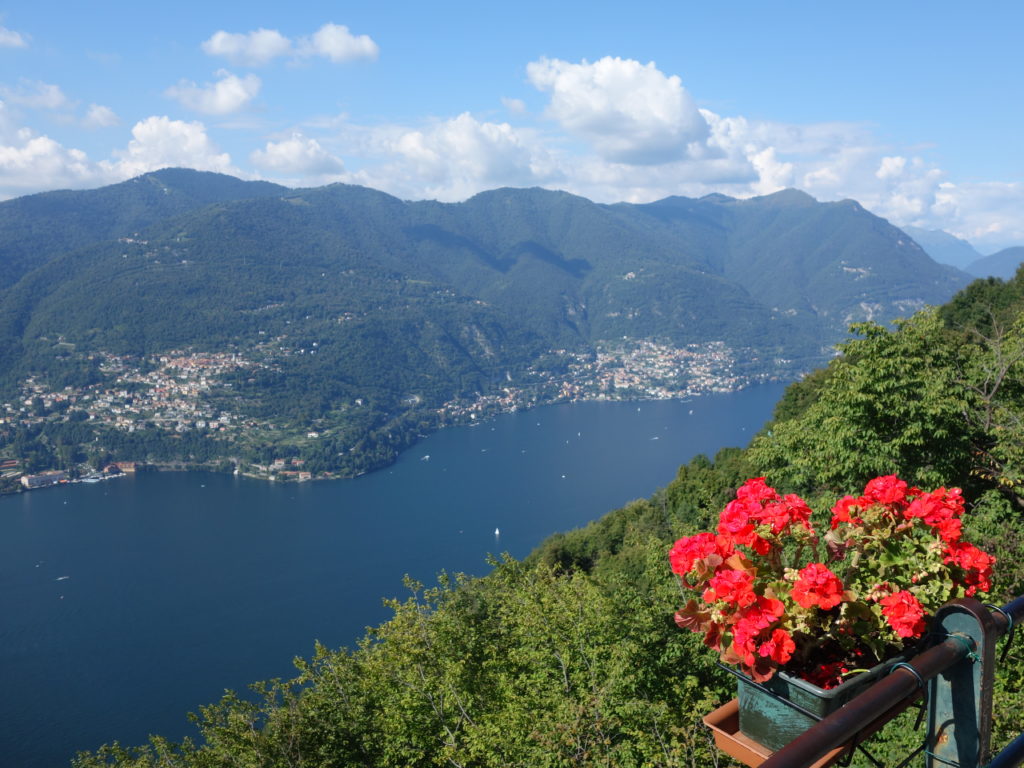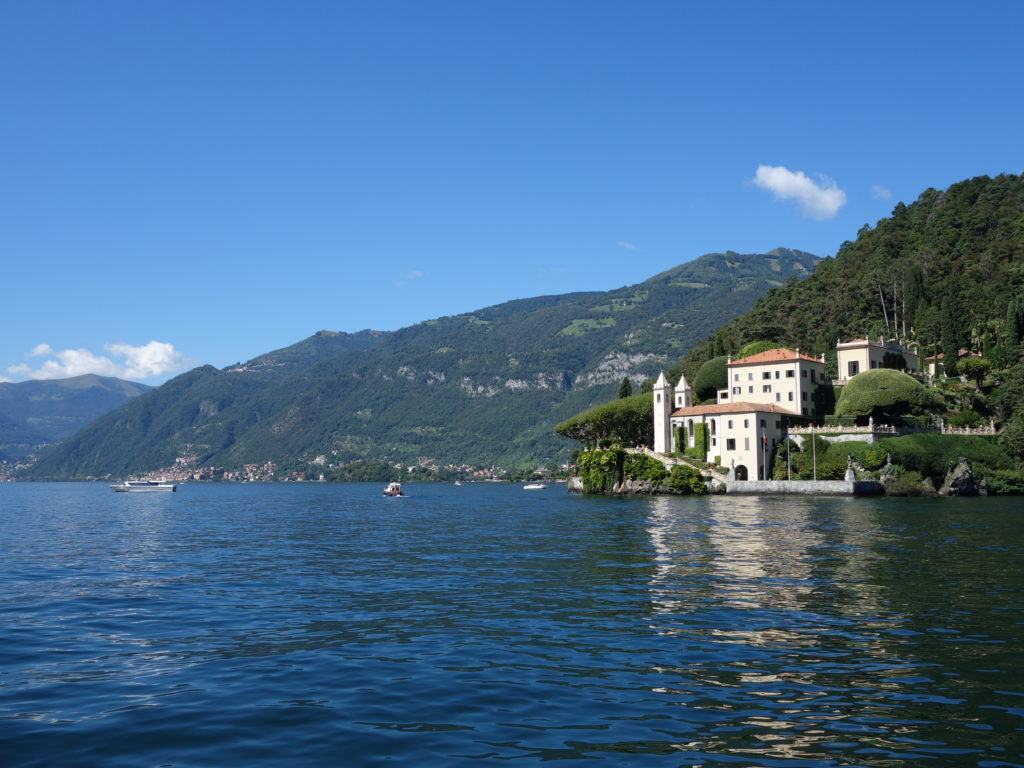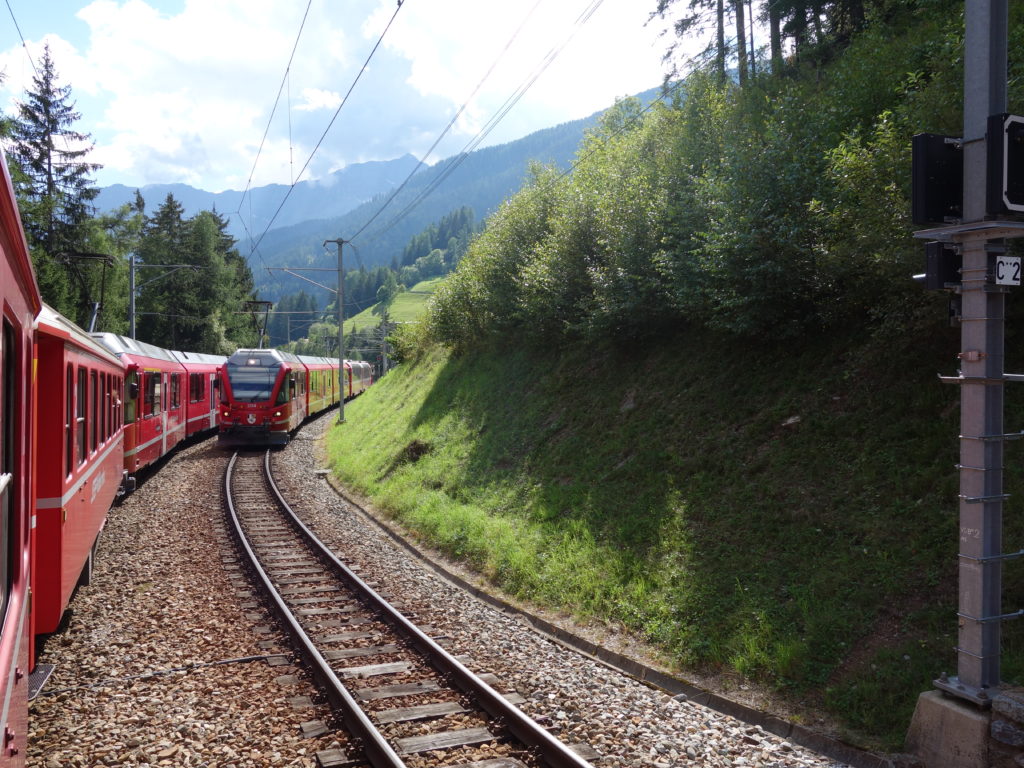Lake Como and the Stelvio Pass
By Mike Christie
Whilst sitting around a table enjoying the late summer sun the subject of a ‘run’ came up. We mulled over several possibilities and then I remarked that I’d like to ‘do’ the Stelvio. Derek immediately said that he would too and the germ of a trip with his YB and our TD was started. We’ve collectively owned these two cars for over 90 years.
Over the next couple of months we started to look at several ways to do the run. We decided that we’d try going with a company who organises these events.
Looking through Safety Fast! we decided to try a company called ‘Scenic & Continental Car Tours’ who arrange tours to Lake Como or Garda via the Stelvio, and we are so glad we did! This company does almost everything bar actually driving the car; from arranging the ferry crossings, booking all of the hotels, providing suggested routes with ‘tulip’ type planners and supplying a very comprehensive itinerary pack. One of our concerns was the parking arrangements for the cars, and with one over-night exception, this could not be faulted.
Spring and summer 2014 were spent preparing and driving the cars. I try and drive the TD every day, weather and salt free roads permitting, and both cars made the trip to several Centre events and attendance at Brands Hatch for the MG Race Weekend, as well as other motor-racing events throughout the summer.
But more major repairs were called for on the TD. For some time I felt that the clutch, although behaving well, wasn’t quite right. So in July I decided to change it.
About six years ago after breaking a third gear I decided to replace the original gearbox with a 5-speed from Hi-Gear Engineering. This is a very worthwhile conversion and can be done over a weekend.
Brakes are probably the most important component of a car attempting the Stelvio and several other passes as we planned to do, and as I hadn’t done a major overhaul for several years I decided that now would be a good time. Over a week or so I replaced all of the old brake parts with the new and I adapted a Gunson Pressure Bleed kit using an old master cylinder cap which made bleeding the brake system a doddle.
Driving the car a lot over many years I’d got used to how the ‘old’ brakes worked. It was only when I started to strip them down that I realised in what poor condition they were, and when I drove the car with the new brakes for the first time, how terribly the ‘old’ brakes had been performing.
Soon the day of departure arrived. We had chosen an early September trip, reasoning that the tourist season in Europe would be drawing to a close and hoping that the notoriously crowded Stelvio would be less so.
Derek lives just north of the M25 and we live just south, so we arranged to meet in Dover at the last petrol station before the port. We arrived within 15 minutes of each other and our small convoy made its way to the check-in and Border Control.
Scenic & Continental Car Tours had arranged the ferry tickets and had supplied a very helpful check-list of essentials to take. Although we are all seasoned travellers in old MGs on the Continent, the list was a useful reminder.
The first stop was at the Novotel in Nancy, a drive of about 290 miles. There is a ‘National’ route that goes alongside the Autoroute to Rheims, but we chose the faster motorway and paid the ‘expensive’ tolls.
Derek had brought along his SatNav and throughout the trip this ‘piece-of-kit’ proved to be very useful. Although comprehensive written instructions were provided by Scenic & Continental Car Tours, the Novotel is fairly difficult to find but ‘Jane’ got us there without a problem. The hotel was great, nice rooms, good food and importantly secure parking for the cars.
The second day’s drive was to Hotel Stocker in Italy. We chose a suggested route to avoid the motorways since the drive was said to take only seven hours. Big mistake! The route was crowded, with many, many road works and delays. Seven hours turned into a nightmare 13, and when we eventually reached the town where the hotel was situated it was dark and only with the help of a friendly barman in a neighbouring hotel were we able to find our hotel. We checked in only to be told that we’d missed the evening meal by 10 minutes, however we were directed to a pizza restaurant in the village and each enjoyed a very welcome and extremely large pizza.
The other problem with the Hotel Stocker was the lack of secure parking. The proprietor said that we should park our cars up the road and round the corner and that they would be quite safe, since “nobody steals things here”. We explained that despite her reassurances we felt this was not a good idea, especially for the TD, so she agreed that we could park on a piece of land at the side of the hotel; which we did.
The rooms were comfortable, breakfast was tasty and we were told that the weather for our drive to Stelvio Pass would be good. We repacked and checked the cars, perused the maps, wished each other luck and we were off.
The Stelvio, what a drive! It starts off benign; a gentle leisurely drive through the National Park with wonderful scenery, and then the first hairpin is reached. From here a board marks the 48 hairpins to the top. The climb is magnificent; steep short runs and extremely tight turns most of which our TD took in second gear changing up to third for the short runs.
It’s not so much the tightness of the hairpins that makes this climb so exciting, it’s more that they are so steep that it’s often impossible to see beyond the hairpin and up to the next one. A car coming down who hopefully is keeping to the right hand side of the road and not taking a ‘run’ at the turn is invisible until the apex of the turn. And there are 48 turns.
The pace is relentless. Second gear, third gear, second gear, third gear and on and on and on.
We stopped only once on the ascent, at around the 23rd hairpin. Derek’s YB had developed an overheating and water loss problem caused, we only discovered a day later, by a pin hole in the bottom hose. But a quick top-up with water and we were off again. Three men on push-bikes also passed us. It’s a slow hard climb to the top of the Stelvio by bike, but many do it. (We did pass them later.) Happily there was little other traffic.
With an immense feeling of elation we reached the top, in low cloud. We’d done it. Our 60 year old cars, mine with a passenger, loaded with luggage for 10 days and various spares and tools, had made it to the top of the Stelvio. MG built strong reliable cars and we were so proud to be driving two of them.
Lots photos of the cars at the top of the Stelvio were taken by us to prove our ascent, and by other people admiring them. After a coffee at one of the cafés we went back to our cars to find that the low cloud had lifted and we were able to take photos of the hairpins below us before commencing our journey.
The south side descent of the Stelvio is great fun. The road is wider and the 12 hairpins are not so sharp. The run into Bormio for lunch marks the end of the first pass. Bormio is a pretty town with interesting alleyways leading into concealed courtyards. Cafés and restaurants are plentiful and we enjoyed a leisurely lunch alongside bikers and motorcyclists before setting off for our main hotel on Lake Como.
It had rained briefly in Bormio but as we drove to Lake Como the heavens opened and we drove the last 40 miles with the hood up.
September time in the mountains around Lake Como often brings thunderstorms and although there were several during our stay there, we were lucky since most of them were at night.
We reached our hotel, the ‘Lario’, late afternoon and drove into the hotel’s underground car park. After our experience at the Stocker the shelter of this gated and very secure car park was very welcome.
We unpacked the cars and checked in. All of the staff at the hotel during our stay couldn’t have been more helpful or pleasant. This is a place that can be thoroughly recommended. We were very pleasantly surprised the next morning to find the storm had passed and the day was sunny and very warm.
We decided to take advantage of this and planned a boat trip down Lake Como to the town of Como on one of the regular ferries that criss-cross the lake.
The ferry is a great way to appreciate the scale of the lake and the trip to Como took about an hour and a half. Como was busy but we had an enjoyable lunch and then took the funicular railway to the viewpoint above the lake. This is well worth the trip and there’s a regular 15 minute service. The views were spectacular.
Before we left England we had pre-booked a trip on the Bernina Express for the next day, Sunday. Advertised as the slowest express train in the world, this single track line goes from Tirano to St Moritz, twisting and turning through a sequence of spirals, loops and tunnels to the highest through-station in Europe, before descending to the resort of St Moritz. What a wonderful train ride which is thoroughly recommended. The views are spectacular and a camera-buff’s dream.
St Moritz is exactly as we had expected, ostentatiously chic. As it was Sunday most of the shops were closed, thank goodness, as from the little we saw in the windows there was nothing we could afford or that our credit cards would allow us to buy. Fearing big prices we sought out a café for a coffee but could only find one which was open and very busy. We got a table fairly easily and with some trepidation checked the menu prices. We were pleasantly surprised, they were very reasonable and we spent a pleasant half hour ‘people watching’. The lake at St.Moritz is beautiful and we walked along it to the station to the take the train back to Tirano.
Derek suggested that he and I try to find the village of Cresta the following day, which, we had been reminded on the train journey, was the site of the famous toboggan run.
We never did find Cresta. We passed only one sign-post to it some miles away from where we thought it was and didn’t find another, but we did find a wonderful pass, the Splugen. This pass is off the beaten track and was therefore quite deserted when we travelled it, but again it was spectacular, loads of steep hairpins and hidden lakes, and a wonderful drive. We had lunch in a small ‘skiing village’ then drove into St Moritz before out-running a thunderstorm that chased us back to the hotel.
We left our hotel on Lake Como on Tuesday morning in good weather for the trip into Switzerland and our overnight stay at Hotel Schweizerhof on Lake Lucerne. The suggested route was via the St Gotthard, Furka and Grimsel passes but we decided we’d add another, the Susten.
The run to the start of the St Gotthard was pleasant and easy with very little traffic other than in the towns; however the compulsory purchase of a vignette to allow us to drive on Swiss roads was a bit expensive.
The St Gotthard pass is civilised and easy to drive with good parking places to enjoy the view. The Furka Pass is much more interesting with tight hairpins and steep inclines. This was the only pass in which I found necessary to take a couple of hairpins in first gear!
At the top of the pass is the Rhone Glacier. We saw this glacier from the town at the bottom of the valley during our trip in the YB and TD to Switzerland on the MG European event in 2008, but it is no longer visible from there because of the rate that it is melting.
Derek, who had been to this glacier before, told us that there was a tunnel into the ice and we decided to stop and go inside. It’s a strange feeling being under thousands of tons of ice in a blue tunnel. Such is the problem of the rapid melt of this glacier that efforts have been made to stop the deterioration by covering the south face with large linen sheets, but this appears to be ineffectual.
The Grimsel Pass was next and this proved just as exciting as the Furka but with a little more traffic. Our final pass, the Susten, did not disappoint either and proved a fitting end to our driving ‘the passes’, and so to our hotel overlooking Lake Lucerne. This hotel like all of the others was well chosen for its accommodation and food and the car parking was suitable for our cars. We covered about 200 miles that day.
The next day’s drive to the Hotel Gulliver in Luxembourg was long, about 312 miles, and uneventful. The Hotel Gulliver is large and modern, but again well chosen for our needs. The accommodation and food were both good and the parking secure.
The run through Luxembourg to Calais is not the most exciting. The motorways are busy and not well maintained and we were held up a couple of times by road works and lorry accidents. 265 miles, but we arrived in Calais on time and the weather was good. Over dinner on the ferry we talked about our adventure and just how perfectly out ‘little’ cars had performed.
Interestingly all of the roads in the passes were in very good condition and well maintained, as were most of the roads we drove whilst abroad. What a difference when we hit the M20 on the way back. It was bumpy and in very poor condition as are most of our roads. If our friends in Europe can get it right why on earth can’t we?
Statistics – in the main the weather was good and even when we had rain it wasn’t on the ‘important’ days. We drove just over 2,500 miles in 10 days; both cars consumed about three-quarters of a pint of oil, and returned about 27 miles per gallon. There were no breakdowns and even on the passes the temperature of the TD with the help of a Kenlow electric fan didn’t get above 85 degrees, oil pressure was steady at 47psi.
Thanks go to ‘Scenic & Continental Car Tours’ for their organisation of this trip. They are to be thoroughly recommended and we will use them again.
And final thanks to our MGs for a safe, reliable and comfortable trip.

 MG Car Club
MG Car Club